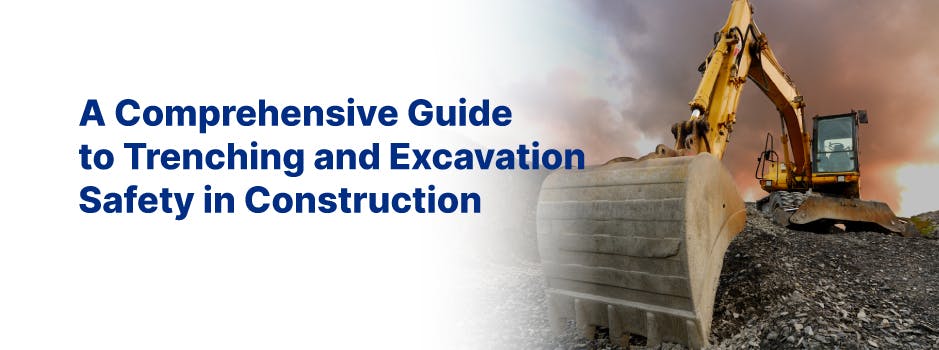Introduction
Trenching and excavation are common activities in the construction industry, involving the digging of trenches or the removal of earth to create a hole or cavity in the ground. However, these tasks can be hazardous if proper safety measures are not taken. we will explore trenching and excavation safety guidelines, as outlined by OSHA, to ensure the safety and well-being of workers in the construction sector.
Understanding Trenching and Excavation Hazards
Before diving into safety practices, it is essential to understand the various hazards associated with trenching and excavation. Some common hazards include:
- Cave-ins
- Engulfment
- Falls
- Hazardous Atmospheres
- Falling Objects
- Utility Strikes
OSHA Regulations for Trenching and Excavation
OSHA has established specific standards and guidelines for trenching and excavation work in the construction industry (29 CFR Part 1926, Subpart P). These regulations include:
- Training
- Soil Classification
- Protective Systems
- Inspections
- Access and Egress
- Hazardous Atmospheres
- Emergency Response
Best Practices for Trenching and Excavation Safety
In addition to following OSHA regulations, employers and workers can take additional steps to enhance trenching and excavation safety. These best practices include:
- Planning
- Excavation Site Evaluation
- Soil Analysis
- Protective Systems
- Safe Access and Egress
- Fall Protection
- Hazardous Atmospheres
- Utility Locating
- Equipment Safety
- Inspections
- Emergency Response
- Worker Awareness
Promoting a Safety Culture in Trenching and Excavation Work
Creating a culture of safety is essential in minimizing the risks associated with trenching and excavation work. Employers, managers, and workers must be committed to fostering a safe work environment by:
- Leadership Commitment
- Continuous Training
- Open Communication
- Incident Reporting and Analysis
- Safety Metrics
- Recognition and Rewards
- Continuous Improvement
Resources for Trenching and Excavation Safety
To enhance your understanding of trenching and excavation safety and ensure compliance with OSHA regulations, consider utilizing the following resources:
- OSHA Publications
- OSHA Training Institute (OTI) Education Centers
- National Institute for Occupational Safety and Health (NIOSH)
- Industry Associations
By leveraging these resources and implementing the guidelines and best practices discussed in this blog post, construction industry professionals can create a safer work environment for all involved in trenching and excavation activities. Remember, safety is a shared responsibility, and everyone has a role to play in preventing accidents and protecting the health and well-being of workers.
Conclusion
Trenching and excavation work in the construction industry can pose significant hazards to workers if proper safety measures are not taken. By following OSHA regulations and implementing best practices, employers and workers can minimize the risks associated with trenching and excavation work. This not only ensures the safety and well-being of workers but also contributes to the overall success and efficiency of construction projects. Remember, a safe worksite is a productive worksite.

